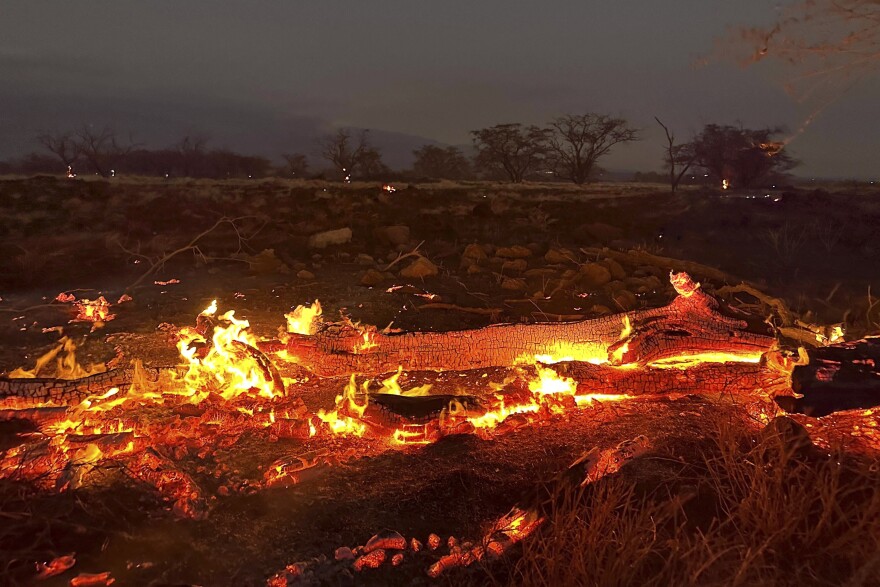Hawaii, with its stunning landscapes and vibrant culture, is a paradise for many. However, being a group of islands situated in the Pacific Ocean, Hawaii is also vulnerable to natural disasters, one of which is the tsunami. In this article, we will explore the concept of tsunamis, their causes, historical instances of tsunamis in Hawaii, safety measures, and the ongoing efforts to prepare for future events.
What is a Tsunami?
A tsunami is a series of large ocean waves caused by significant disturbances in or near large bodies of water. These disturbances can be triggered by earthquakes, volcanic eruptions, landslides, or even meteorite impacts. Unlike regular waves that are caused by the wind, tsunami waves can travel across entire ocean basins at incredible speeds, reaching up to 500 miles per hour in deep water.
How Tsunamis Form
When an earthquake occurs under the ocean, it can displace a large volume of water, creating waves that move outward in all directions. As these waves approach shallow coastal areas, their speed decreases, but their height can increase dramatically, often leading to devastating impacts when they reach land. You Can Also Read This Understanding the Hawaii Fire Map: Keeping Safe in Paradise
Characteristics of Tsunami Waves
Tsunami waves differ from regular ocean waves in several ways. For one, tsunami waves can be very long, sometimes stretching over 60 miles apart. Additionally, when they reach shore, they can appear as a rapidly rising tide rather than a breaking wave, making them particularly dangerous.
Historical Tsunamis in Hawaii
Hawaii has experienced several significant tsunamis throughout its history. Each event has had varying impacts on the islands, shaping the understanding of tsunami safety and preparedness.
The 1946 Tsunami
One of the most devastating tsunamis in Hawaiian history occurred on April 1, 1946. Triggered by an earthquake in the Aleutian Islands, this tsunami hit the Big Island of Hawaii and caused severe damage and loss of life, particularly in Hilo. Over 150 people lost their lives, and the destruction of buildings and infrastructure was extensive. This event led to significant changes in tsunami warning systems and emergency preparedness in Hawaii.
The 1960 Tsunami
On May 22, 1960, the most powerful earthquake ever recorded struck near Valdivia, Chile. This event generated a massive tsunami that traveled across the Pacific Ocean and struck Hawaii about 15 hours later. The tsunami caused significant damage, particularly in Hilo and other coastal areas, resulting in 61 fatalities. The 1960 tsunami highlighted the need for improved communication and warning systems.
The 1975 Kalapana Tsunami
On the night of January 15, 1975, a tsunami caused by a volcanic eruption off the coast of the Big Island struck without warning. While the impact was less severe than earlier tsunamis, it underscored the unpredictable nature of these events and the importance of constant vigilance and preparedness.
The Science of Tsunami Warning Systems
Hawaii has developed robust tsunami warning systems to help protect residents and visitors. These systems are crucial for providing timely information about potential tsunamis.
The Pacific Tsunami Warning Center
The Pacific Tsunami Warning Center (PTWC), located in Ewa Beach, Hawaii, monitors seismic activity and provides alerts for tsunamis. The center uses a network of seismic stations to detect earthquakes and predict whether they will generate tsunamis. Once a tsunami is detected, the PTWC issues warnings and advisories to affected areas.
Tsunami Alerts
There are three levels of tsunami alerts:
- Tsunami Warning: Issued when a tsunami is imminent or already occurring. Evacuations may be necessary.
- Tsunami Advisory: Issued when a tsunami is expected but may not cause widespread damage. Precautions should still be taken.
- Tsunami Watch: Issued when an earthquake has occurred that could generate a tsunami. Residents should stay informed.
Community Preparedness Programs
In addition to early warning systems, Hawaii emphasizes community preparedness. Schools and local governments conduct regular tsunami drills to ensure that residents know what to do in the event of a tsunami. These drills include evacuation routes and safe zones.
Safety Measures and Evacuation Plans
Knowing what to do before, during, and after a tsunami can save lives. Here are some essential safety measures and tips for residents and visitors in Hawaii.
Before a Tsunami
- Know Your Zone: Familiarize yourself with tsunami evacuation zones and routes.
- Create a Family Emergency Plan: Discuss how your family will communicate and where to meet after a tsunami warning.
- Prepare an Emergency Kit: Include essential items like water, non-perishable food, medications, flashlight, and important documents.
During a Tsunami Warning
- Evacuate Immediately: If you are in a tsunami evacuation zone, leave the area as soon as a warning is issued.
- Move to Higher Ground: Seek higher elevations away from the coast. Do not stay to watch the waves.
- Stay Informed: Use your phone or a battery-powered radio to receive updates from local authorities.
After a Tsunami
- Stay Away from the Coast: Wait for official announcements before returning to coastal areas.
- Check for Injuries: Help others if safe to do so, and seek medical attention for anyone injured.
- Listen for Updates: Continue to monitor news reports for further information about potential aftershocks or additional tsunamis.
The Future of Tsunami Preparedness in Hawaii
Hawaii continually invests in research and technology to enhance tsunami preparedness. Efforts include improving forecasting models, community education programs, and updates to evacuation routes. These advancements aim to minimize the impact of future tsunamis and ensure the safety of residents and visitors.
Community Education Initiatives
Local organizations and government agencies conduct workshops and informational sessions to educate the public about tsunami risks and safety measures. These initiatives help empower residents to take action and stay safe.
Technological Innovations
Advancements in technology have also improved tsunami detection and forecasting. Enhanced computer models allow scientists to predict tsunami behavior and potential impacts more accurately.
FAQs About Hawaii Tsunamis
What causes a tsunami?
A tsunami is primarily caused by underwater earthquakes, volcanic eruptions, or landslides that displace large volumes of water.
How can I stay safe during a tsunami?
Know your evacuation routes, create a family emergency plan, and move to higher ground immediately if a tsunami warning is issued.
What is the difference between a tsunami warning and a tsunami advisory?
A tsunami warning indicates an imminent threat, while a tsunami advisory means that a tsunami is expected but may not cause significant damage.
How does Hawaii prepare for tsunamis?
Hawaii has established warning systems, conducts regular drills, and provides community education to ensure residents are prepared for tsunamis.
Have there been any recent tsunamis in Hawaii?
While Hawaii has experienced tsunamis in the past, the state continually monitors seismic activity and is prepared for potential threats.
Conclusion
Tsunamis are a serious threat to Hawaii, but with proper knowledge and preparedness, residents and visitors can stay safe. Understanding the science behind tsunamis, the history of past events, and the available safety measures is crucial for survival. By staying informed and prepared, we can enjoy the beauty of Hawaii while respecting the power of nature. For more information on Hawaii’s attractions and safety tips, visit Hawaiian Page.



